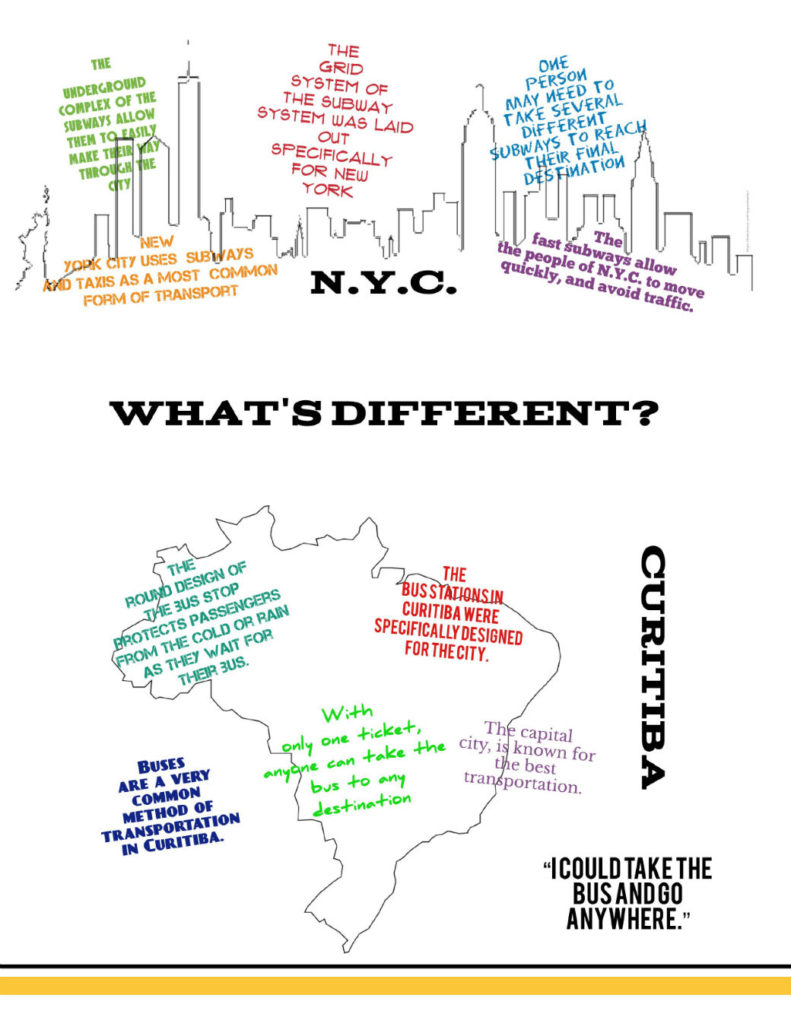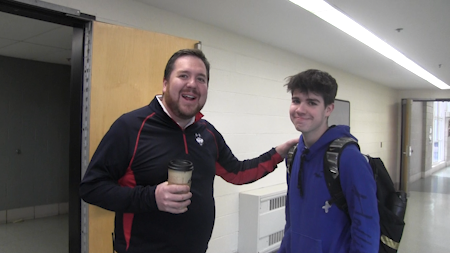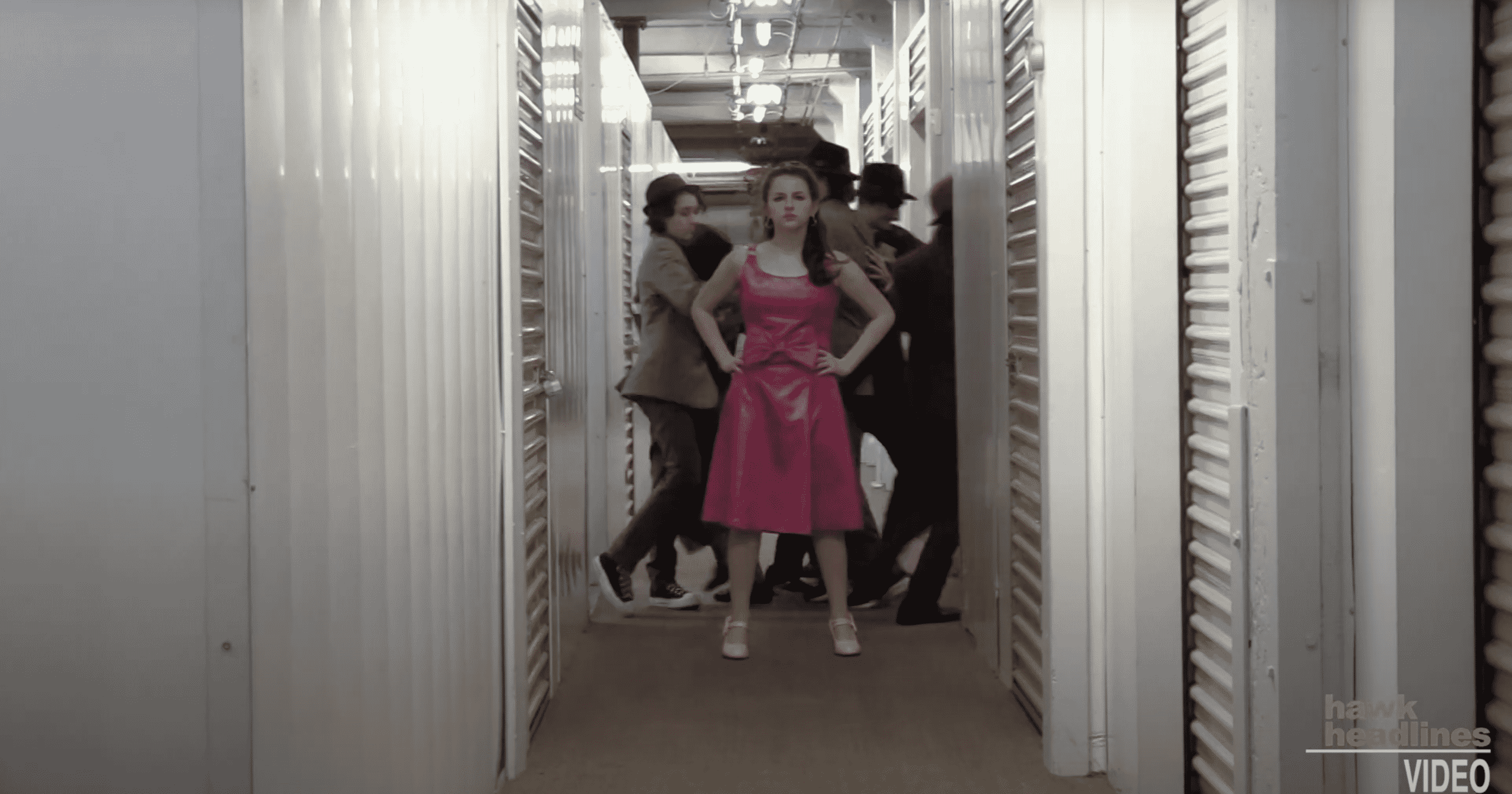Imagine moving states. You would have to make new friends, go to a new school, live in a new house, a new town too. Now imagine moving countries. You would still leave all that you know, if you’re old enough to remember, and everything would change. Many customs would change, and you may even need to learn a new language.
About 3 months ago, this was a reality for sophomore Fernanda Ogassawara. After living in Brazil for almost all 15 years of her life, Ogassawara moved to Beacon Falls, CT, all the way from Curitiba (ker-a-chi-ba). This city is in the state of Paraná (pa-rah-na), which is in southern Brazil. Ogassawara’s old city sits 7,823 miles away from Beacon Falls.
Curitiba is the capital city of Paraná. As of 2010, the city is home to 1.75 million people. As of the same year, Beacon Falls was only home to 6,049 people. Ogassawara is still adjusting to the large difference in population.
“I like it,” she said, “but I’m still getting used to the small town.”
Ogassawara compared her city to New York City, another city she loves. Both cities have lots of people and buildings. Curitiba also has skyscrapers like NYC.
 While NYC has many subway stations, buses are a very common method of transportation in Curitiba. The capital city is known for the best transportation. The bus stations in Curitiba were specifically designed for the city. Their round design protects passengers from the cold or rain as they wait for their bus. The stops are easily spotted and are everywhere too, so you wouldn’t have to look too far for one.
While NYC has many subway stations, buses are a very common method of transportation in Curitiba. The capital city is known for the best transportation. The bus stations in Curitiba were specifically designed for the city. Their round design protects passengers from the cold or rain as they wait for their bus. The stops are easily spotted and are everywhere too, so you wouldn’t have to look too far for one.
With only one ticket, anyone can take the bus to any destination within the 167,968 square mile city.
“I could take the bus and go anywhere,” Ogassawara said.
In the city of Curitiba, everyone speaks Portuguese. This is the national language of Brazil. Not many people at Woodland can fluently speak this language, so the Brazilian native had to learn how to speak English. As anyone learning a new language can agree, she found this a bit hard.
“It was kinda difficult at the beginning, but as I watched TV in English it became easier with time.” Ogassawara said.
Not only did she watch television shows in English, Ogassawara changed her iPhone’s language settings to help her too. For the past two years, she took English at her school. It was offered as a class, like how students can learn Spanish, French, or Italian at Woodland. This class was not of much assistance to her though.
“You know when you’re learning but you’re not actually learning,” Ogassawara described, “that’s what it was like.”
To help strengthen her English speaking skills, Ogassawara had a tutor that would help her twice a week for an hour each time. This was the most helpful for her. Ogassawara was now able to speak English well, this was perfect timing for her move.
Before Ogassawara moved, she had to say goodbye to all of her friends, this was extremely difficult for her.
“Most of my friends, I’ve known them my whole life. It was hard.” She said.
Not only did she leave her friends, Ogassawara left the private school they all attended — Colégio Alto Padrão. In Brazil, it’s common for most students go to private high schools, just like how many American students go to a public one.
For teenagers, the transition to entering a new school can be very difficult. Cliques have been formed for years, everyone knows each other, and most know the school inside and out. Ogassawara was most scared of going to a new school. Not only were the students and faculty unfamiliar to her, Ogassawara also had to adjust to a whole new school system.
Brazil, high school starts with their sophomore year, which they call year one. Years two, and three follow right after. Freshman year is a part of their middle school, thus meaning high school is only three years long for them.
Throughout these three years, Brazilian students don’t change classrooms like how Woodland students walk from the third floor to the second, to the first on a daily basis. Instead, their teachers walk from classroom to classroom teaching the different lessons, and the students remain the same room.
Staying in the same room isn’t bad for them though, since their school day only lasts for five hours, an hour less than our typical day. Classes start at 7:30 and end at 12:30. They also receive a thirty-minute break from 9:50-10:10.
There are also many more differences between American and Brazilian schooling. The students at Colégio Alto Padrão can’t choose their electives. Classes like, art, gym, philosophy, and sociology are mandatory for the students to take. The curriculum is very different as well. In many American high schools, students take classes progressing in difficulty as each year goes on. As a freshman, American students might take environmental earth science, biology the next year, and so on. At Ogassawara’s old school, the students take a little bit of each subject every year. Throughout the year they learn biology, chemistry, and physics simultaneously.
After high school, they take a very important test. This test determines their future. If a student does well on this test, they receive college for free, if not, then they can choose to attend a private college.
Like all American schools, schools in Brazil have summer at the end of their school year. A Brazilian’s summer lasts from the beginning of December to the end of January. This meaning their ten month school year lasts from February to November.
They won’t be seeing any snow during their summer though, Curitiba doesn’t experience snow, or harsh winters like New England does. Temperatures usually only go as low as 50 degrees Fahrenheit during their winter months.
A year in Brazil is typically hot, but Curitiba is slightly colder than other cities in the country. Ogassawara has yet to adjust to the temperatures in Connecticut. The already cold temperatures are only growing colder as winter nears.
“I’m more cold than everyone else,” she shared. “I’m always wearing more clothes than everyone else too.”
Three months later, Fernanda Ogassawara is well adjusted in the United States and at school. There are things she misses, but she was able to celebrate many new customs that were not common in Brazil, like Thanksgiving.
“We don’t celebrate Thanksgiving in Brazil, “ Ogassawara said, “but my step-dad’s family does, and I did this year.”
The sixteen-year-old enjoyed her first Thanksgiving, but not as much as she enjoyed her first Halloween. Ogassawara, who dressed up as Alice from Alice in Wonderland, went out and got a lot of candy.
Another event the sophomore got to experience for the first time, was the Homecoming dance, which she also had a lot of fun at.
Ogassawara enjoys living here and is happy she gets to learn new words and ways to say things in English.
“I’m learning English in a way I would never learn in Brazil,” Ogassawara said.
She admits the language sometimes tires her out, but she loves it nevertheless. She says she is grateful for this opportunity to learn and get in touch with a different culture.




















